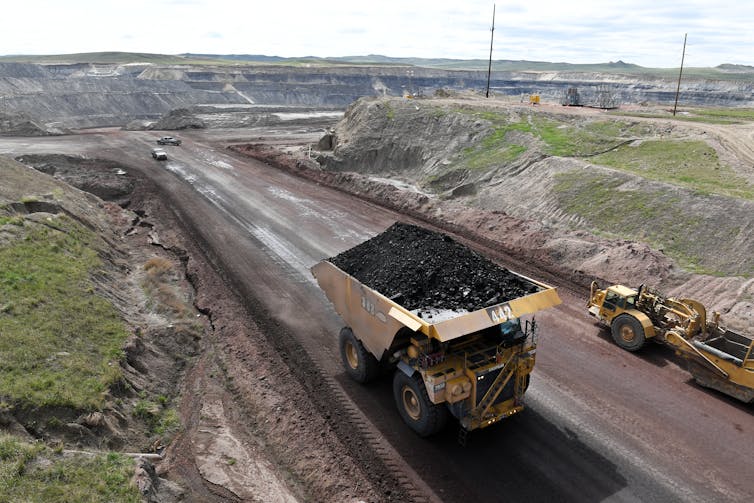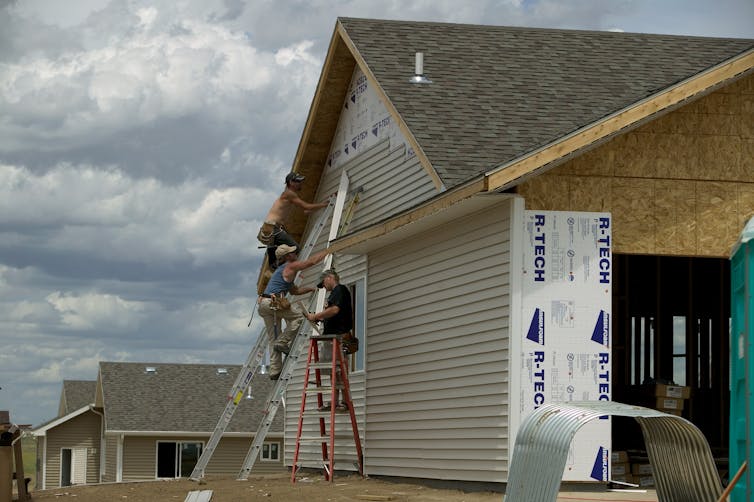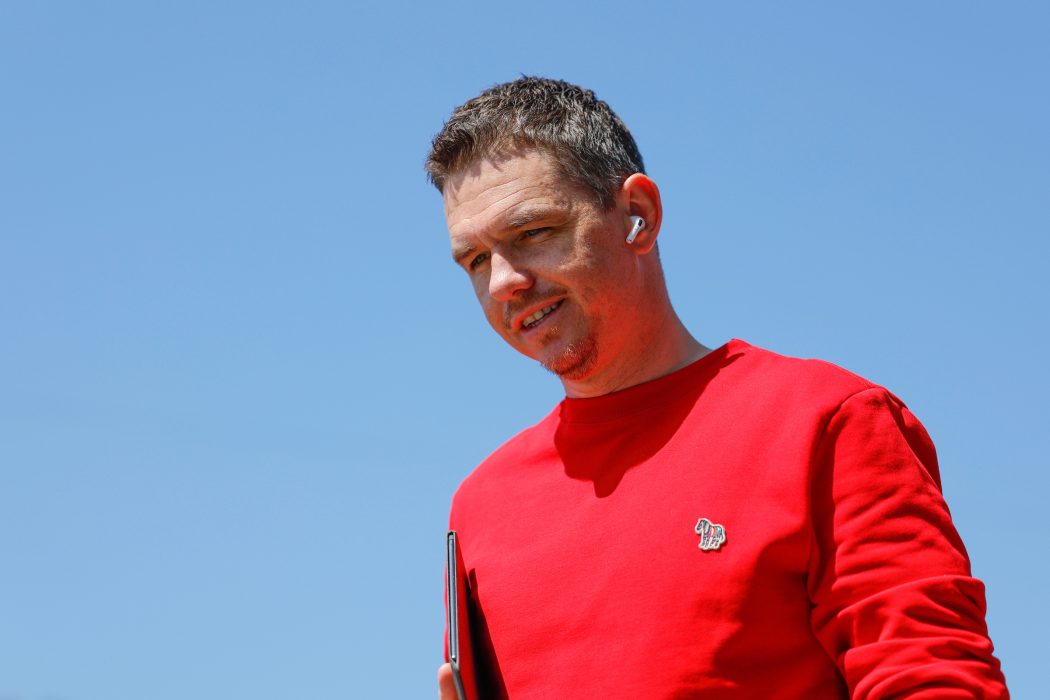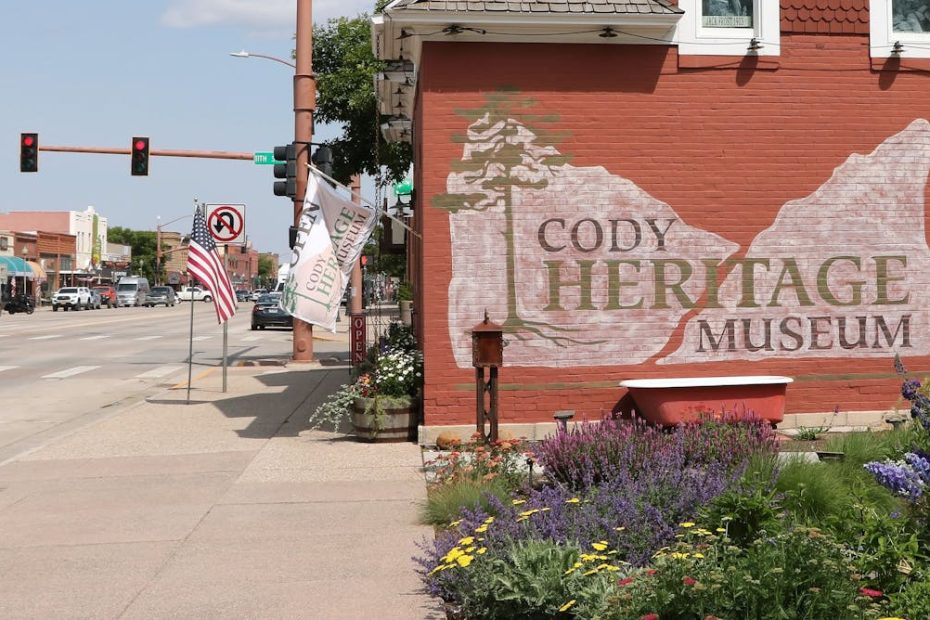One way Trump can help revive America's rural economy
Picture yourself living the American dream. You probably have more opportunities than your parents. Through hard work, smart choices, and maybe a little luck along the way, you'll have financial stability and a lot of freedom to choose your next step in life.
There's also a good chance you'll live in or near a vibrant community with a thriving local economy.
We tend to focus on aspects of the American Dream, but we also value our communities—our downtowns, Little Leagues, good schools, safe public spaces, and local traditions. Individuals and families tend to look for places that offer these things as well as nearby jobs. When a community begins to lose these quality-of-life assets, residents take notice. Young people tend to migrate out.
But why do once-vibrant places sometimes lose this quality?
As economists who study the constraints to better economic growth, we think about this question all the time, most recently the case in Wyoming. We found an often overlooked factor in many different places, and understanding it is critical to helping these communities recover.
Why communities enter a decline cycle
Whether a community thrives or falls into economic chaos depends largely on its ability to generate “tradable income.”
Tradable revenue is the jargon for the currency generated by the local economy from the sale of goods abroad. This could be crops that people grow, products that are produced in factories, services that businesses sell, or minerals that are mined from the ground. This income then circulates through the local economy in the form of demand for other jobs such as cashiers, hairdressers, and handymen. Tradable income is critical for importing all goods and services that are not produced locally.
Without tradable income, the rest of the local economy will struggle to survive. You can think of tradable income as oxygen circulating within the local economy.
Rural economies almost uniformly have fewer and less diverse sources of tradable income than urban economies. They may have relied on the same primary source of tradable income that was the reason the community was settled in the first place.

Matt McLean/The Washington Post via Getty Images
These economies are more vulnerable to existing economic and environmental shocks and downward spirals of community decline than urban economies, which over time have built more diverse sources of tradable income.
For example, regional economies built on the extraction and sale of natural resources may face booms and busts due to resource prices or government policies. The sudden closure of a mine can begin to wipe a community off the map within a few years. This is despite the fact that most jobs in the community are not provided directly by the mines. The deeper and often overlooked issue is that tradable revenue is tied to the mine.
This process is not new. This is why there are many ghost towns in the West, and why many once-powerful manufacturing towns became the Rust Belt. In small communities, area schools and even Walmarts can have the same effect if they close because they may be the only source of outside funding.

Robert Nickelsberg/Getty Images
The loss of any significant source of tradable income, if not replaced, deprives local economies of the oxygen they need to survive. Without new sources of tradable income, city center shops will close as businesses lack demand, unemployment rises, local tax revenue plummets and people leave.
Federal funding has design flaws
State and federal policies have never been particularly effective at facilitating the transition of local economies from old sources of tradable income to new sources of tradable income, or even softening the blow.
Today, it’s easy to see how climate change — and efforts to combat it by shutting down fossil fuel extraction and power plants — will deliver painful new shocks to local economies, just as automation and globalization have done.
The Biden administration’s recent push to build infrastructure and jump-start strategic industries—including passing the Infrastructure Investment and Jobs Act, the Inflation Reduction Act, and the CHIPS and Science Act—is driven in part by a desire to provide some provide economic opportunities that are increasingly being left behind.
Recognizing that different places have different needs, these federal efforts tend to provide resources to communities through discretionary grants rather than formula funding. In other words, the system puts the onus on community leaders to identify funding opportunities and compete for funding through proposed projects that meet predetermined criteria, rather than allocating resources based on population or other formulas.
However, a key issue is that most rural areas do not have the local government bandwidth and personnel to navigate the system.
Town clerks and part-time local officials often have many public jobs but don’t have the time or resources to manage the intricate federal funding system. They don’t have time to absorb the vast array of webinars, newsletters, and online tools created by federal agencies to spread the word about opportunities, let alone successfully apply for grants for complex projects with short application windows.
Not surprisingly, federal funds tend to go to larger cities with greater resources.
Wyoming, a predominantly rural state, is one example. The state receives fewer federal discretionary grants per capita than most other states, and those grants reach relatively few communities. Our team at the Harvard Kennedy School’s Growth Lab has been working with officials and residents there to find solutions.
Many in Wyoming believe the grant's eligibility criteria intentionally disadvantaged this deeply conservative state. The program that drives that narrative has eligibility criteria, such as grants targeting coal communities that better match the demographics and income levels of Appalachia than Wyoming. Likewise, the lack of a Medicaid program in the state has reduced the flow of federal funds.
The main reason, however, is simpler and more mundane. From Wyoming to Vermont, small and stressed communities across the political spectrum face the same systemic obstacles in navigating the system.
Government can do better – start here
Efforts are underway across the state, including in Wyoming, to help local leaders identify and secure federal grants, most importantly establishing staffing and assistance centers that local leaders can tap to help navigate the federal system. But we believe a fundamentally better system is possible.
When federal entities face rural communities in areas facing tradable revenue shocks, they can flip the script and instead develop highly specific grant programs, invite communities to apply and compete, and centrally select winners.
Instead, federal entities can work with each other and with local leaders to start with the specific needs of the regional economy and develop customized programs accordingly. Federal agencies can do more to empower and support locally identified transformation efforts, rather than selecting around centrally designed programs.
That’s the spirit of the U.S. Economic Development Administration’s Recompetition Pilot Program, which awarded six large grants last year among numerous locally driven proposals from economically distressed areas. A similar shift in approach is a key takeaway from the federal government's Coal and Power Plant Interagency Task Force on Communities and Economic Revitalization, whose most recent progress report looking back on three years of work highlighted the greater need to work with, rather than impose In people: local leaders and coalitions.
Developing new tradable revenue avenues is never easy or quick, but this is a better place to start.









